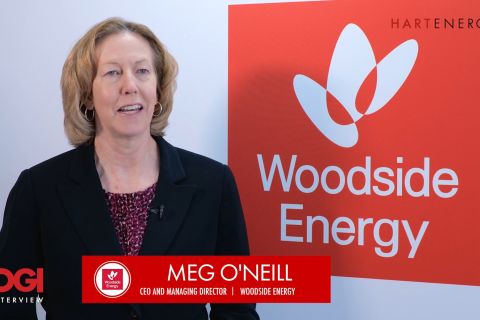Midstream oil and gas infrastructure activities are critical for meeting growing energy demand. Today, project sponsors are under pressure to deliver these critical projects on time and on budget. Yet, construction projects for oil and gas transmission pipelines, gathering systems, processing plants and distribution systems face several challenges to achieving their business goals and meeting customer commitments.
When projects are delayed or go over budget, the expected financial returns are seldom achieved. Indeed, significant losses or reduced profits can ensue, particularly in the short term. In the worst cases, disputes among owners, engineers, contractors, subcontractors and suppliers can result in substantial delays and cost growth. Litigation or arbitration costs alone can become significant.
Complex midstream construction projects are especially vulnerable to delays, reduced profits and disputes, as project sponsors often lack processes and controls tailored to the midstream industry, relying instead on processes used for upstream construction projects. In addition, project owners with limited resources often do not have the time or proper resources to develop adequate construction processes and controls.
This article discusses common situations faced during midstream construction projects and discusses the root causes of these situations. Several questions are also provided which project sponsors can use to examine the effectiveness of their project organizations.
Common situations
Problems can result from common situations that occur in midstream construction projects. For example, rights-of-ways, contract controls and billing activities can all give rise to planning pitfalls.
A natural gas pipeline project might start construction before all of the rights-of-ways and permits are secured, leading to unanticipated contractor moves, cost escalation and an elongated schedule. Or, the project sponsor might ineffectively manage the contract to align with owner directives and to comply with the reporting, payment, and change management provisions, which can lead to contractor claims and potential litigation. Also, ambiguous unit-price definitions can result in overbilling on the contract. Some common indicators of this problem include excessive timber mat purchases instead of leap frog placements, linear pipe laid through mainline valve stations and bore length measurements based on total pipe length instead of total length between tie-ins.

Root causes
Some of the typical root causes that can lead to undesirable project outcomes and significant economic losses include project management issues, project sourcing, scheduling and reporting.
At the outset, projects can run into problems resulting from issuing invitations-to-bid documents that reflect an inappropriate assignment of project risks and by not having a uniform mechanism to compare bids effectively. Fast-tracking projects without supplying adequate resources to mitigate rights-of-ways and permit acquisitions, improperly sequencing activities, and pushing contractors to start before the sponsor is ready, can also lead to problems. On the opposite extreme, elongated project schedules can result in late delivery and liquidated damages with transportation customers.
Also, managing a company’s midstream pipeline projects in the same way that high-volume drilling projects are managed increases the likelihood of a troubled project. Project management processes and controls for high-volume drilling projects are often inappropriate for midstream projects, which have different risk characteristics.
Similarly, a project delivery strategy that does not link current market conditions to the sourcing plan for key materials, labor and contractor capabilities can lead to problems. Inadequate detailed planning and internal strategy alignment among the parties involved in the project can also lead to problems. A related cause is overreliance on key personalities and their capabilities to deliver projects without the right process and internal control support.
Key controls
Another common root cause in project reporting frequently occurs when sponsors do not sufficiently address the definition of “key controls” in the contract language. Project reporting mechanisms that provide early warning signals derived from predictive metrics should be the goal, instead of relying on lagging indicators from cost-based metrics.
Inadequate project reporting tools and reports that do not provide management with reliable information and insights for decision making tend to result in slow or late decisions that can lead to delays or overrun costs. For example, in many projects, using metrics like firing line and tie-in weld productivity per day, or planned moves versus unplanned moves, can provide more predictive information than focusing on the amount of linear feet of pipeline constructed per day.
An effective organizational design structure that defines employee roles and responsibilities, processes, internal controls and focused reporting, which is supported by uncomplicated information tools, can allow the project team to manage the project and administer the contracts in a thoughtful manner. There are a number of steps that a project sponsor can take to gain greater insight to correct the course of projects before they become troubled.
Case study
A recent case study illustrates a typical situation for a troubled project and shows how a project sponsor can examine its project organization. In this case, the sponsor is constructing a multistate pipeline that crosses significant stretches of wetlands, major highways, rivers and foreign lines, which are pipelines that cross the centerline of a new pipeline under construction.
The sponsor opted to segregate the route into several spreads based primarily on terrain considerations and put the spreads out for a competitive bid. The sponsor chose an outsourcing model in which separate service providers assist with rights-of-ways acquisition, surveying, detailed design and engineering, construction inspections and nondestructive inspections.
The sponsor opted for a target-price contract based on unit prices for purposes of the target, but would pay actual incurred costs based upon employee time records, vendor invoices and equipment usage logs. According to the terms, the contractor could earn a bonus or incur a penalty based upon the difference between the target price and the actual costs incurred.
The project spreads were awarded to multiple pipeline contractors, and the sponsor was responsible for procuring the pipe and delivering it to the lay-down areas for the contractor to place along the pipeline route. The sponsor also fast-tracked the project to meet multiple customer and market demands.
In this case, the sponsor was confronted with the challenge of ensuring that it had an appropriate contracting and project controls organization to support project leadership in managing the project and the multiple pipeline contractors. The primary internal controls and reporting were cost-based and focused on the available budget, cash flow, and schedule.
Also, the sponsor placed unfounded reliance on the pipeline contractor’s weekly status reports, which did not include validated measures. Third-party service providers were operating and reporting their progress independently, with no agreement as to the actual progress of the project or issues encountered. As a result, the sponsor had great difficulty in gauging the actual progress and status of each provider, their contractual compliance, and the overall health of the project.
Because the sponsor did not rationalize its contracting and outsourcing strategies, processes and reporting requirements, the project ended in dispute. More effective planning and oversight could have avoided the dispute and saved the project sponsor a significant amount of money.

Questions to consider
When faced with typical situations that can lead to a troubled project, the following questions can serve as a starting point for project sponsors to gain a better understanding of the health of their project and to examine their project organizations:
Does the project organization separate projects into meaningful portfolios consistent with the type of project, construction delivery strategies and third-party sourcing requirements?
Are project portfolios managed identically or customized to the differing requirements of each construction delivery strategy?
Are work breakdown structures used that are explicitly linked to work packages and strategic sourcing plans for bundling or unbundling work scopes?
Does the strategic sourcing organization properly support the differences between procuring commodities, such as pipe, and procuring services, such as third-party consultants and pipeline contractors?
Are contracting templates for both commodities and services aligned with project delivery strategies?
Does the sponsor maintain and update the status of project schedules at the work-package level, or does the sponsor replicate standard process steps at a more detailed task level?
Are uniform milestones defined at a meaningful level to allow a portfolio view of all projects and to provide early warning signs that a project could be entering a troubled situation?
Do project managers receive formal training in the sponsor’s project management approach, system, and strategic contract management principles, including ways to communicate with service providers to maintain contractually negotiated rights and obligations?
Does the project reporting system provide insights on work volumes, information backlogs and decision-or-wait risks among the multiple third parties and the sponsor?
Are reporting systems able to identify and monitor work bottlenecks that can lead to predictable schedule delays and cost overruns?
Is project information recorded in numerous spreadsheets, temporary databases, and other tools requiring manual collection and manipulation?
Is the information presented as a data point (historical) or as behavior-over-time measurement (predictive) that indicates trending at meaningful intervals?
Do project team meetings focus on problem solving, decision making and achieving objectives, or do they instead update task status or share low impact information?
By asking these types of questions, and using the answers to efficiently plan and manage construction projects, sponsor companies can avoid planning pitfalls and continue to optimize their employees and contracted workforce.
Conclusion
Although midstream oil and gas infrastructure construction projects will always face challenges that arise from common situations, sponsors can help avoid the negative effects of these situations they assess the capabilities of their project organizations, evaluate the adequacy and reliability of project management controls, and determine if additional processes, systems, and training can improve project results. Effective planning, thoughtful contracting, and project management oversight can help companies to avoid litigation and contribute to positive returns on their capital
Todd Boley and Keith Moore are directors in KPMG’s Major Projects Advisory Group that serves the oil and gas sector. Todd can be reached at 214-840-2436 or tboley@kpmg.com, and Keith can be reached at 713-319-2523 or kgmoore@kpmg.com. The views and opinions expressed herein are those of the authors and do not necessarily represent the views and opinions of KPMG LLP.
Recommended Reading
CNX, Appalachia Peers Defer Completions as NatGas Prices Languish
2024-04-25 - Henry Hub blues: CNX Resources and other Appalachia producers are slashing production and deferring well completions as natural gas spot prices hover near record lows.
Barnett & Beyond: Marathon, Oxy, Peers Testing Deeper Permian Zones
2024-04-29 - Marathon Oil, Occidental, Continental Resources and others are reaching under the Permian’s popular benches for new drilling locations. Analysts think there are areas of the basin where the Permian’s deeper zones can compete for capital.
Exxon Versus Chevron: The Fight for Hess’ 30% Guyana Interest
2024-03-04 - Chevron's plan to buy Hess Corp. and assume a 30% foothold in Guyana has been complicated by Exxon Mobil and CNOOC's claims that they have the right of first refusal for the interest.
Petrobras to Step Up Exploration with $7.5B in Capex, CEO Says
2024-03-26 - Petrobras CEO Jean Paul Prates said the company is considering exploration opportunities from the Equatorial margin of South America to West Africa.
The OGInterview: How do Woodside's Growth Projects Fit into its Portfolio?
2024-04-01 - Woodside Energy CEO Meg O'Neill discusses the company's current growth projects across the globe and the impact they will have on the company's future with Hart Energy's Pietro Pitts.





